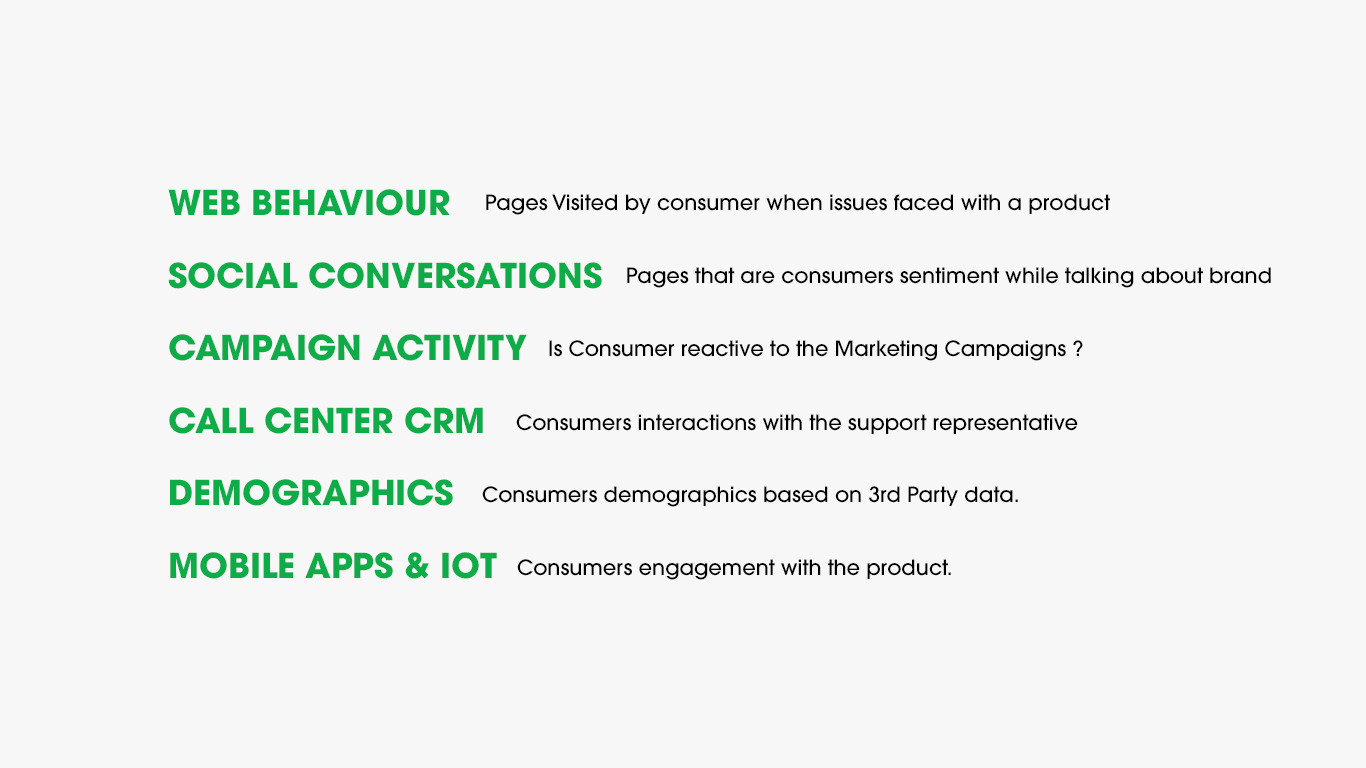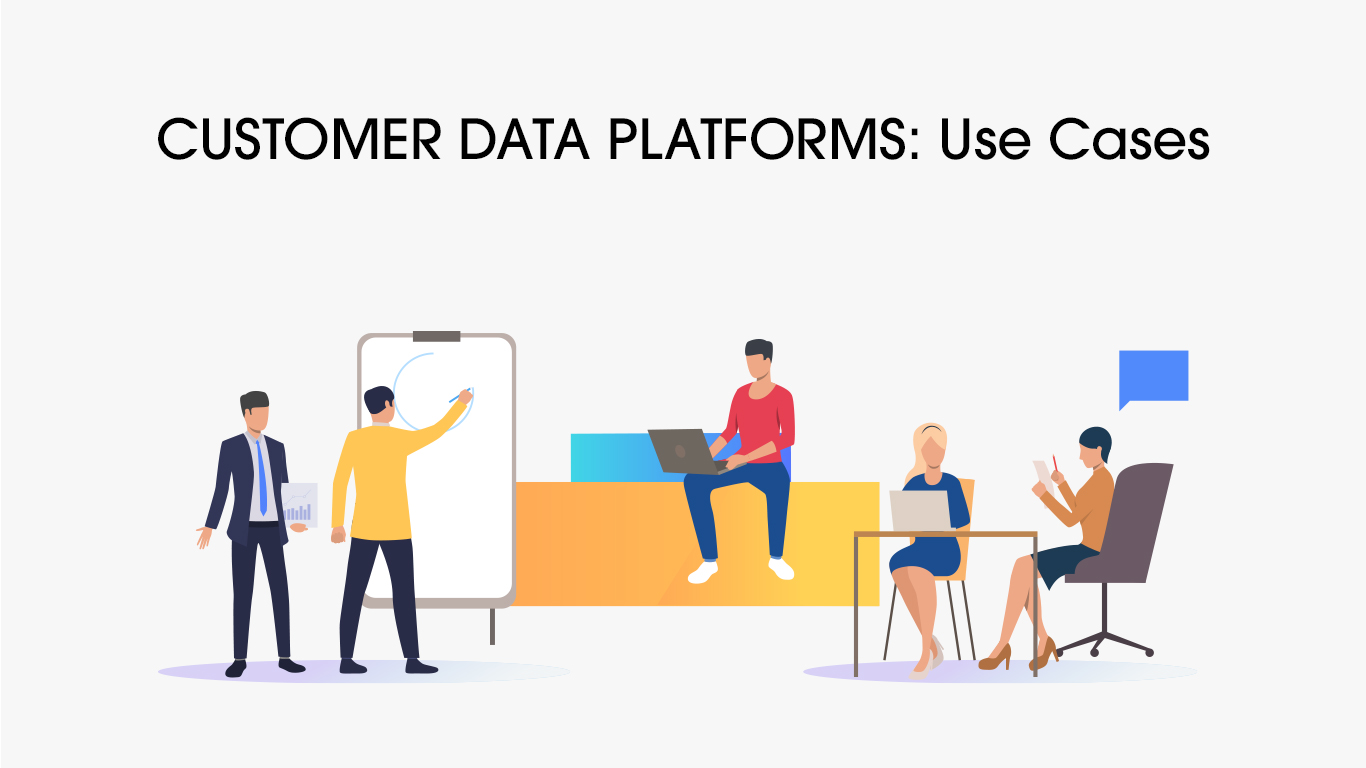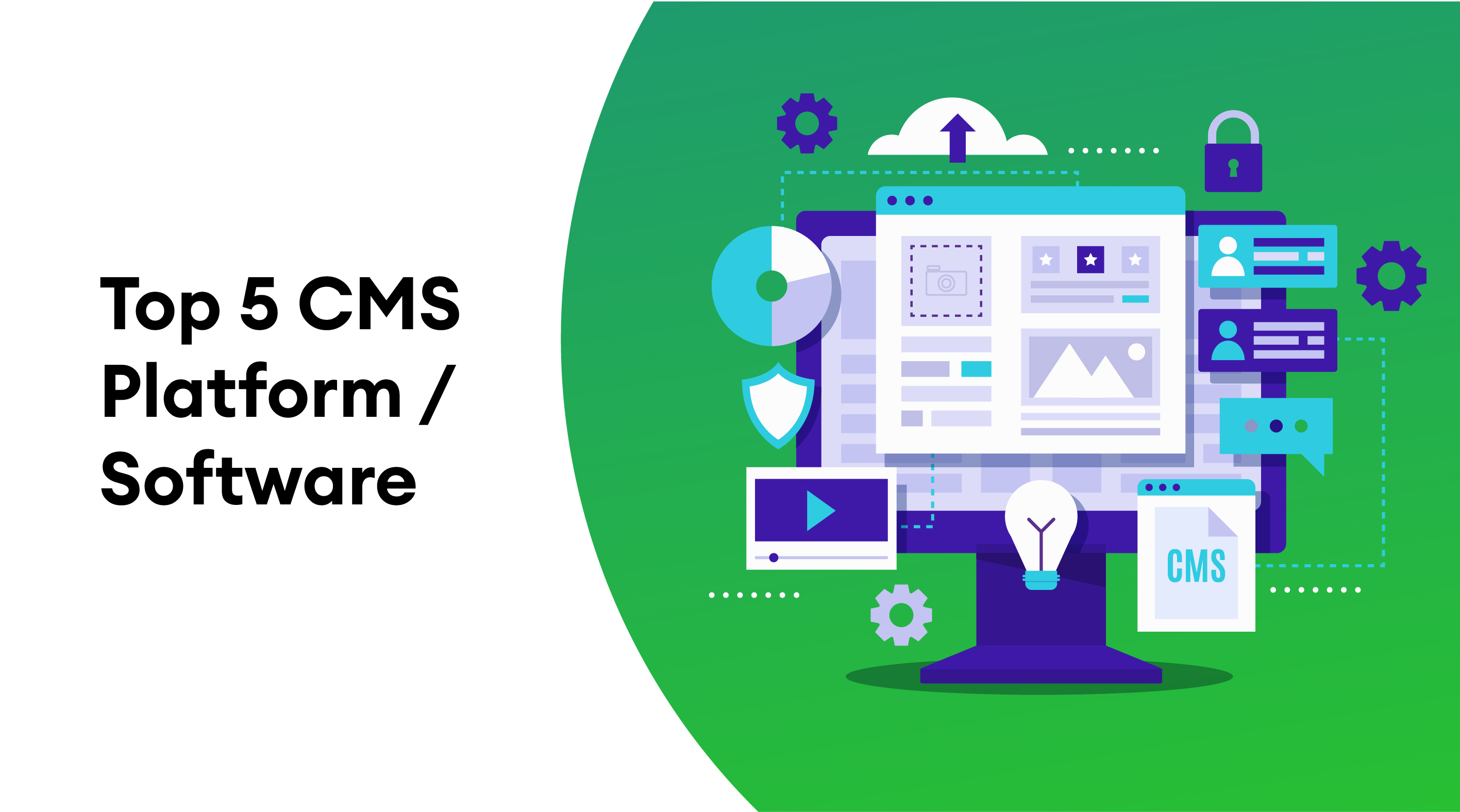As many of you here may have read my previous article about customer data platforms (CDPs), you already know what a CDP is, how it works, its various benefits, the differences between CRMs and CDPs, and a whole lot more. For those who haven’t, here’s where you’re redirected from. Click on this link and make the best use of a ton of super useful info!
Customer Data Platforms (CDPs) — What They Are, Unique Features, Benefits, and Importance
Now, for the rule benders, let’s go over what a customer data platform is again. A CDP enables access, analysis, and action on each detail that a company knows about a customer, which allows marketing to these customers through content that is more personalized, expressive, and effective.
Are customer data platforms really a challenge for businesses? Despite the increasing awareness about the need for unification of data, many companies still make use of siloed data channels. With a constant increase in the number of channels through which companies interact with customers, customer demand for a seamless experience across all channels also increases, which is exactly where companies are failing.
Companies that make use of database marketing solutions, sooner or later, realize the need for a more enhanced database but do not understand the role that CDPs play in bridging the integration gap. Traditional database solutions are as efficient as CDPs and do not have the ability to track customer behavior across multiple channels, which makes distinguishing individual customer attributes difficult. This attribute of traditional databases encouraged marketers to rather opt for segmented channels for their marketing campaigns.
The segmented approach is incapable of meeting the personalization demand of customers and cannot provide a cross-channel experience either. Customer data platforms can solve all of these problems related to customer data unification and simplification. However, the major challenge that a company faces, in terms of a CDP, is the organizational challenges that are omnipresent. To best explain organizational challenges, here’s a short example.

Every organization has individual departments that store customer data that is specific to that department. The sales department owns the sales data, the maintenance department owns the maintenance data, and so on. The problem arises during the implementation of customer data platforms, more specifically, when these teams are asked to provide their respective data sets for integration. Here, every department would be hesitant to share their data sets and would normally get responses such as, “Why does this need to be done?” or “We’ve been doing it this way since forever.”
Another problem that generally arises in organizations is the sheer amount of data. Once the departments are on board with the idea of customer data platform implementation and are ready with their data sets, the slightest of changes in the data or organization structure during the integration of these data silos could make integration a daunting task for most marketers and IT professionals.
A couple of common challenges that CDPs face in the market are as follows:
-
Varying CDP Functions
As the technology is still in its early stages, many software vendors take the liberty to design their customer data platforms in their own ways, with no set standard functions and with each vendor looking to provide solutions for specific problems. The problem here is the decision making for businesses that need to purchase a CDP. After viewing a number of CDPs and the functions and value that each offer, the company is left with the crucial task of choosing the correct CDP for their particular line of business.
-
Inefficient Use of Data
While customer data platforms focus on data acquisition and unification, marketers lose focus on the much larger picture — conversions, customer experience, and retention. Therefore, despite having tons of data, which is acquired from the CDP, marketers do not know how to efficiently implement that data into marketing campaigns. The basic definition of a customer data platform being software that accumulates data shouldn’t detract marketers from the fact that the data should be utilized to reach the companies most engaged customers and also target others and inculcate the same engagement practices for the business to prosper.
These challenges put across a clear message that states the actual reason behind the potential pitfalls of marketing campaigns that are supported by data from customer data platforms. It is simple, while a CDP can provide the deepest and most valuable of insights into customer preferences and behaviors, ultimately the onus lies on the marketer to make the most of this data and improve campaign results.
How to Choose the Right CDP
One of the biggest challenges that most marketers face is the choice of the customer data platform (CDP) that is to be implemented in their organization. Companies today gather large volumes of customer data and require the efficient storage and utilization of this data. For this task, companies put their faith in technology, more specifically, in CDPs.
Each company receives specific types of data and have a specific nature of the business that they are involved in. Since each business is unique, marketers need to be critical while evaluating the need and functioning of customer data platforms before coming to a conclusion. To be sure of the decision, marketers, and companies generally take a few preliminary steps that further cement the decision they have made. These steps are as follows:
- Do You Really Need a CDP?
Marketers mustn’t always go hand-in-hand with what’s happening in the market. They need to first evaluate whether a customer data platform is an ideal solution for their organization, or some other data tool can do the task in a better manner than a CDP.
- Can Your Organization Handle a CDP?
Organizations must decide whether they have the experience and skillsets to make use of customer data platforms and effectively implement the sourced data into marketing campaigns. Another option for this would be the outsourcing of CDP data and marketing management. This SaaS model is generally preferred by organizations that find integration to be a problematic step to do and also preferred for the pricing as SaaS is generally more cost-effective.
- Make a Thorough Check of the Existing Tech
Marketers are suggested to take an opinion from their IT departments as well to understand the functioning of their current systems. Also, the IT department is responsible for the integration of their data and existing systems with the CDP.

- Evaluate Customer Profiles for Functionalities
The reason organizations opt for customer data platforms is to increase customer interaction and increase sales and ROI. For this to happen, the customer profile that a CDP generates needs to be evaluated in order to get an understanding of the capabilities of the CDP. The results are directly impacted by the capabilities of such as customer identity resolution, duplicate entry deletion, or data standardization.
Customer data platforms generally evaluate customer profiles from multiple sources, however, not all sources. It is essential to understand which all channels a particular CDP can source data from.
- Data Strategy Presence
Marketers must assume a hypothetical situation wherein a customer data platform is implemented and think of the steps they need to take after receiving that data to implement in the marketing campaign. This strategy must be in place before actually purchasing a CDP.
This goes to say that marketers and organizations must ask a few questions of their processes, and marketing targets while researching a CDP. Marketers should be sure of the solutions, and service areas of CDPs. They also need to make sure of the customer data platform in their specific use cases, processes, training, and marketing strategies to make the best use of it. In the case of just the CDP, marketers need to know the functioning of the CDP, whether it provides smart insights, deliver true personalization across multiple channels, and other such capabilities.
Organizations need to especially check for whom the customer data platform is designed. Some CDPs target marketers and are inclined to providing solutions to marketing problems, whereas some are designed for IT professionals and are mainly focused on data extraction and storage. Marketers are better equipped for decision-making once they have all of these criteria resolved and ensures more efficient and maximized results. Without these marketing solutions, marketers will end up purchasing customer data platforms that are not meant for the purpose that they had envisioned and end up blaming the technology instead.
Best Practices for Customer Data Platform (CDP) Implementation
Once marketers have decided that a customer data platform is the right way forward for their businesses and have decided upon a particular CDP, the crucial part of customer data platform implementation comes into play. Some marketers do not see the importance of pre-planning for this particular step and think of it as an on-the-go process. However, having a pre-determined course of implementation eases the process and does away with any unnecessary complications that may have arisen had marketers not taken care of this step. Some of the best practices that top marketers and IT professionals follow during CDP implementation are as follows:
-
Pre-Decide Control:
By now, it is well understood that customer data platforms are marketer managed and not another data tool that is looked over by the IT department. Marketers need to ensure that they are the ones handling the Customer data platforms and not the IT department of a business. Marketers can ask the IT department for assistance whenever necessary, in instances where data integration or other such IT associated tasks are to be accomplished. It should be assumed that IT support is required for set-up and data modeling, but the remainder can easily be managed by the marketing team without the daily involvement of the IT department. Therefore, it is up to the marketing departments to decide how much control and management they want over the CDP.
-
Flood the Customer Data Platform (CDP) with Data:
Customer data platforms are fed by data, and it is obvious that the greater the amount of data that goes into a CDP, the better the results. The key function of customer data platforms is to collect data from different sources, process and unify that data, and deliver the results to relevant platforms that enable omnichannel personalization. To ease data preparation, marketers need to opt for CDPs that comprise built-in ETL (Extract, Transform, and Load) capabilities. The method of data collection and ingestion into the customer data platform makes a big difference to the end result.
-
Multi-System Integration:
Common problem marketers face during customer data platform implementation is integration with other systems. Marketers need to opt for CDPs that ease the process of integration with other applications and systems. Customer data platforms generally make use of APIs or plug and play connectors to integrate with other systems. However, just because CDPs have these built-in features does not mean integration is a simple or automatic process. The integration process should be such that it requires minimum IT support.
-
Hybrid CDP Implementation:
As the main function of customer data platforms is to gather and unify information from multiple online, offline, and partner sources, some organizations may not want to share their first-party data with a CDP. These organizations generally include financial and other such organizations, where customer data privacy is of utmost importance. Such organizations must opt for a hybrid customer data platform solution, where the organization’s private and valuable data can be stored on-premise, whereas the other data can be stored on the cloud.
Selecting a customer data platform can be an arduous and daunting task for marketers and businesses alike. After thorough research, a suitable Customer data platform is chosen, and the implementation process begins. This process is pivotal to any business, and the right customer data platform CDP can drive personalized marketing campaign results through the roof. To ease the implementation process, marketers must take some time to think about the splitting of operational and management duties between the IT team and the marketing team.
Why Businesses Choose CDPs Over DMPs
Similar to the confusion between CDPs and CRMs, as in the previous article, DMPs and CDPs are often thought of as the same. DMPs are considered the most valuable of tools in advertising and digital marketing. As a technology, DMPs were the first tool that allowed marketers and advertisers to collect data, classify it, and, also, store it from multiple sources such as APIs, cookie syncing, and data enrichment from third-party sources, among others. While DMPs and CDPs do have some similar traits and overlapping functionalities, they are different from each other in quite a few ways.
DMPs were originally designed to work around one channel, i.e. ad networks. They collected data, classified, and categorized it into different segments and uses these segments to achieve particular targets. To summarise this, they serve as data warehouses for marketers and advertisers. On the other hand, customer data platforms gather and unify data about real customers across multiple MarTech tools of a company. This data is used across multiple channels for communication and marketing purposes and, more specifically, for website content personalization and customized emails, and discounts, among others.
DMPs mostly operate on anonymous third-party data and not personal, first-party data, which goes to show that a DMP cannot identify users and show ads that are relevant to the user’s online behavior. In the case of customer data platforms, they make use of first-party data from known users/ customers, which increases personalization of ads and experience according to the previously documented online and offline behavior of the user.
DMPs typically store individual user-level data for up to 90 days and place a greater focus on categories and segments rather than user-level data. Also, since DMPs make use of anonymous data, lists and segments are generated on a probabilistic method, which decreases the resulting quality and overall efficiency a marketing campaign may have. Customer data platforms, however, make use of the deterministic matching method, which is possible through tracking of the user’s email ID. Since each ID is unique, the accuracy of this technology is much greater (around 80–90%).
Therefore, it is pretty clear as to which technology is superior and why. Customer data platforms provide companies with an evolving database of customer profiles that are enriched with each interaction between user and company. These profiles are referred to as 360-degree customer profiles and comprise all aggregated data that a company knows about each of its customers. To sum it up, while DMPs work on anonymous data that provides a probability-based marketing campaign, CDPs work on all types of data to provide marketers with an efficient marketing campaign.

The goal of a CDP, for businesses, is to store customer data in a single central location to improve decision-making, service delivery, and customer experience. However, it isn’t actually the business that buys and utilizes the CDP, it is the people working for that company, who do. Since multiple teams across the company are going to be utilizing the CDP, each in a different way, here’s some day-to-day use cases of customer data platforms:
-
Bonobos
When Bonobos, an e-commerce driven apparel company, began opening its initial few physical stores, the CEO, Micky Onvural, realized that the company needed to cover customer touchpoints online as well as offline. As customer data platforms enable easy access to data to increase positive outcomes, track the customer journey, and make data-driven decisions, executives better understand the omnichannel user experience and how online expenditures influence offline behavior. This is how executive teams utilize CDPs to inform strategy.
-
Imperfect Foods
As customer data platforms effectively break down data silos, product teams can access individual data to measure and enhance critical KPIs (Key Performance Indicators), and quickly scale growth and get new processes working in a few days rather than weeks, or months. In the case of Imperfect Foods, the VP, Patti Chan, and her team of designers and engineers were faced with the challenge of finding new growth opportunities, while keeping up with the daily demands of the business. Imperfect Foods required a solution that enabled Chan and her team to run experiments and measure results without overburdening the team. Today, Imperfect Foods uses Customer data platforms to collect and deliver clean customer data to run and evaluate tests quickly.
-
DigitalOcean
Customer data platforms enable easier connection of all digital assets of a company, from advertising campaigns to websites and even email marketing, and helps marketers in forming highly segmented audiences, understanding attribution, and proving the direct impact. DigitalOcean wanted a technology solution for the creation of highly targeted and personalized marketing campaigns. However, since the data it owned was segmented on multiple platforms, building such lists was extremely time-consuming, which resulted in the company resorting to much simpler, generic audiences that were built by advertising platforms, which had poor end results.
To solve this, DigitalOcean implemented a CDP to automate the manual process of creating advertising audiences. DigitalOcean has created highly targeted advertising audiences and successfully decreased its cost per conversion rate by 33% by connecting the customer data platform to data from Tray.io, Customer.io, Google Analytics, Amplitude, and Optimizely.
Takeaway
As a marketing solution, customer data platforms are a big win not only for vendors but also for the companies and marketers that make direct use of this technology. The evolution of CDPs is an acknowledgment that data quality, customer profiles, personalization, integration, and privacy are prioritized by companies today, in order to deliver a better customer experience.








Wow that was odd. I just wrote an really long comment but after I clicked submit my comment didn’t appear.
Grrrr… well I’m not writing all that over again. Anyhow, just wanted to say
excellent blog!